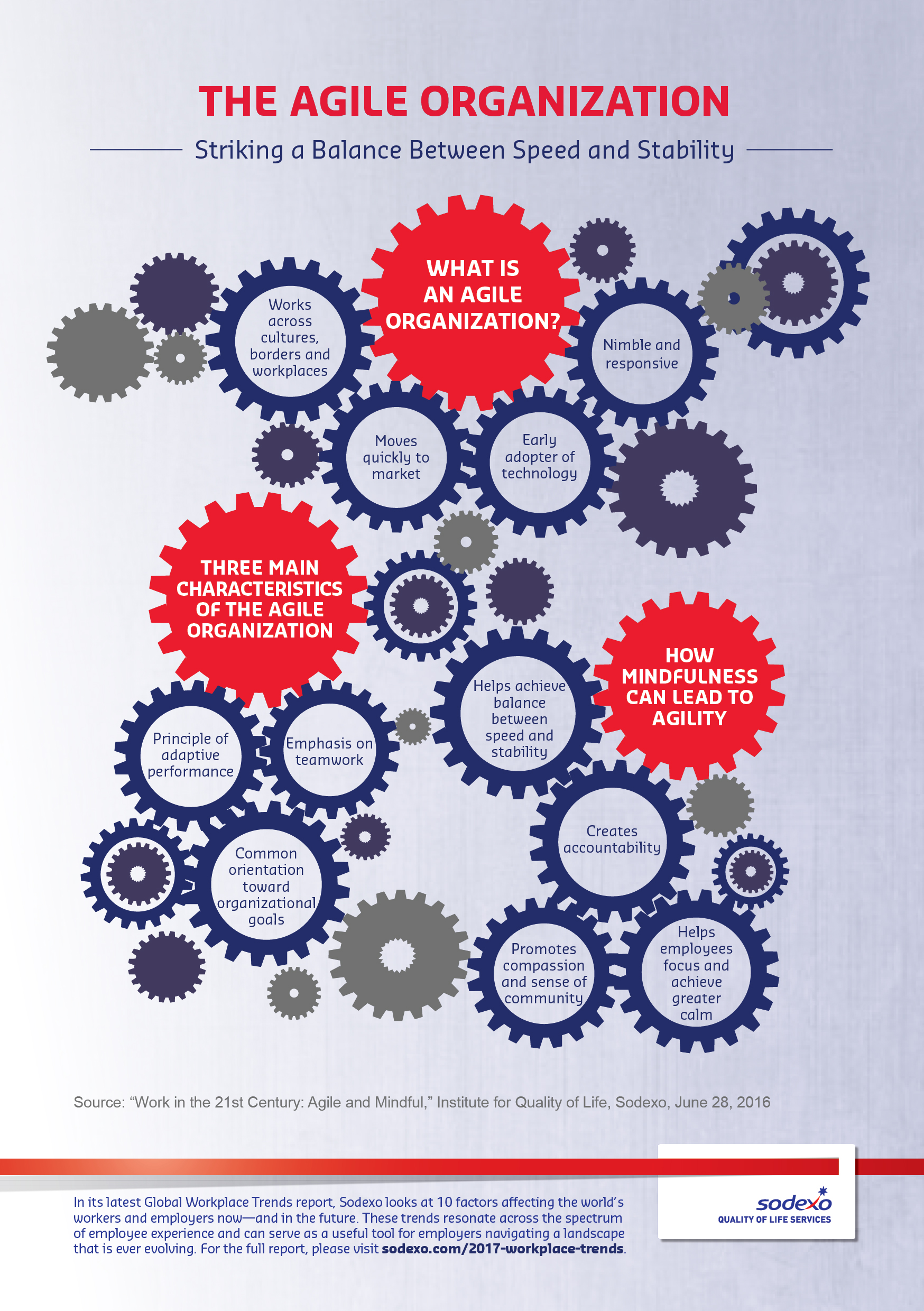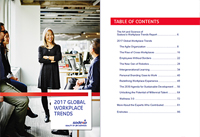The agile organization
Striking a balance between speed and stability
NOW
Though agility is the new norm across multiple sectors and industries (remember the old adage “Change is the only constant”?), some nudging remains necessary for companies all across the corporate landscape to develop agility as a frontline mode of operations.
NEXT
Of 277 companies in a recent Accenture study, the ones with higher levels of both stabilizing structural backbone and velocity were 436% likelier to be seen as outstanding financial performers in their industries than those that lacked both1. Organizations will take these proof points to heart by more than ever allowing people to have the freedom and responsibility to work out their challenges in order to see a surge in innovation and creativity. The practice of mindfulness, for one, will be standard in the quest to embrace agility. Rather than just talk about it, businesses will put their words into action to access the potential of human beings — which they will acknowledge remains largely untapped.
1 “Competing perspectives on the link between strategic information technology alignment and organizational agility: Insights from a mediation model,” Tallon, P. P. & Pinsonneult. MIS Quarterly, Vol. 35, No. 2 pp. 463-486, June 2011.
To go further
About the 2017 Global Workplace Trends
Every year, Sodexo looks at the main factors affecting the world’s workers and employers now — and in the future. These trends resonate across the spectrum of employee experience and can serve as a useful tool for employers navigating a landscape that is ever evolving.













